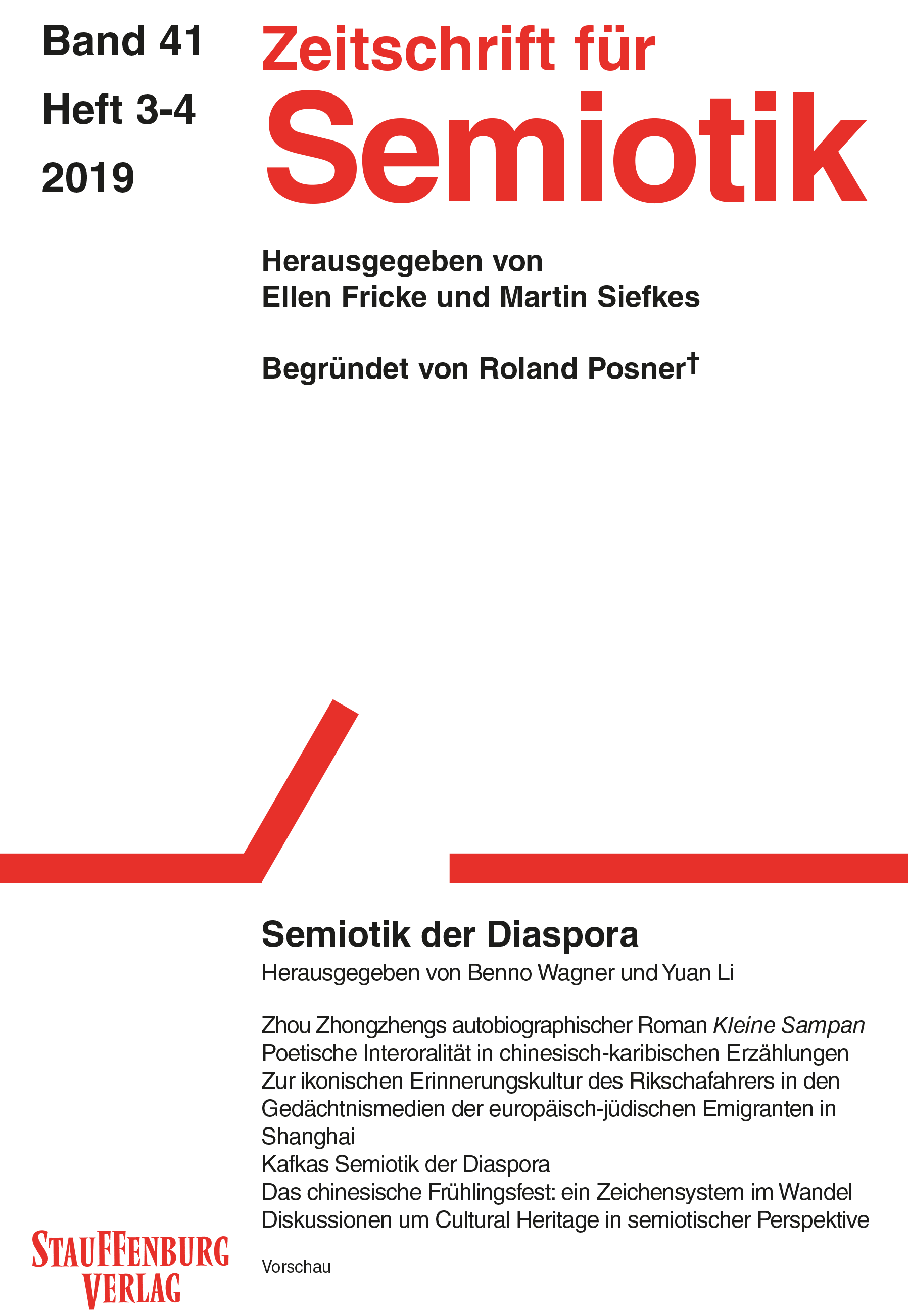Zur ikonischen Erinnerungskultur des Rikschafahrers in den Gedächtnismedien der europäisch-jüdischen Emigranten in Shanghai in den 1930er und 1940er Jahren
eine kultursemiotische und gedächtnismediale Perspektive
DOI:
https://doi.org/10.14464/zsem.v41i3-4.715Keywords:
Shanghai, culture of remembrance, cultural memory, Jewish emigrants, collective memory, rickshaw, exile, cultural exchange, diaspora, migration, historical photography, Horst Eisfelder, Adolf J. Storfer, Roland Posner, cultural semiotics, Jewish studiesAbstract
The article takes the perspective of cultural semiotics by Roland Posner as well as the concept of medium of collective memory by Astrid Erll and analyzes the iconic memory culture of the rikshaw driver in the memory media of European-Jewish emigrants in Shanghai in the 1930s and 1940s. The coded memory icon in written and visual form functions as a symbol of primitivity and inhumanity as well as a symbol of the working people in Shanghai. It emerges as an emblem of life-threatening suffering and as a sign of the hierarchic and colonial social order in Shanghai. The various semiotic implications of the rickshaw driver are formed by cultural-determined values and patterns of thought, diverse diasporic states in Shanghai and divergent cultural and political identities of European-Jewish emigrants.
Downloads
Published
Issue
Section
License
Copyright (c) 2024 Wei Zhuang

This work is licensed under a Creative Commons Attribution 4.0 International License.
Copyright for articles published in this journal is retained by the authors. The content is published under a Creative Commons Licence Attribution 4.0 International (CC BY 4.0). This permits use, distribution, and reproduction in any medium, provided the original work is properly cited, and is otherwise in compliance with the licence.


